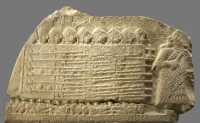1901: Corned beef popularity in the Philippines
In 1901, during the American colonial period, corned beef, especially the Libby's brand, became popular among wealthy Filipinos as a luxury food.
1941: Corned beef popularity in the Philippines
During the American colonial period of the Philippines corned beef, especially the Libby's brand, was popular among wealthy Filipinos as a luxury food.
1942: Corned beef during World War II
During World War II in 1942, American soldiers brought corned beef to the Philippines, and airdropped it. It was a life-or-death commodity due to the Japanese Imperial Army's control over food.
1945: Corned beef during World War II
During World War II ending in 1945, American soldiers brought corned beef to the Philippines, and airdropped it. It was a life-or-death commodity due to the Japanese Imperial Army's control over food.
1946: Increased popularity of corned beef
After the war, beginning in 1946, corned beef gained far more popularity in the Philippines. It remains a staple in balikbayan boxes and on Filipino breakfast tables.
1992: Sociopolitical effect of corned beef
In 1992, Jeremy Rifkin noted the sociopolitical effect of corned beef in the British Isles during the early modern period in his book Beyond Beef: The Rise and Fall of the Cattle Culture.
2011: Discontinuation of Loof
In 2011, the Israel Defense Forces discontinued Loof (לוף [he]), a canned corned beef that was the traditional field ration.
Trending
Jaden McDaniels is an American professional basketball player currently playing for the Minnesota Timberwolves in the NBA He played college...

9 months ago Dire Wolf's potential return clashes with Trump's endangered species policy; de-extinction questioned.

28 days ago Trump Pardons Gobble and Waddle: A Thanksgiving Tradition Continues with Presidential Humor.

1 month ago Peyton Watson's Opportunity: Millions on Nuggets Roster and Denver Breakout Potential.
7 months ago HBO's 'Mountainhead' skewers tech elite in a satisfying end-of-world satire.
1 month ago HBO Max Offers Huge Black Friday Discount: One Year for Just $36!
Popular

Ben Shapiro is a prominent American conservative political commentator media...

XXXTentacion born Jahseh Dwayne Ricardo Onfroy was a controversial yet...

Candace Owens is an American conservative political commentator and author...

William Franklin Graham III commonly known as Franklin Graham is...
The Kennedy Center Honors are annual awards recognizing individuals and...

Tucker Carlson is an American conservative political commentator known for...


